Kaas ~ Flowering Plateau
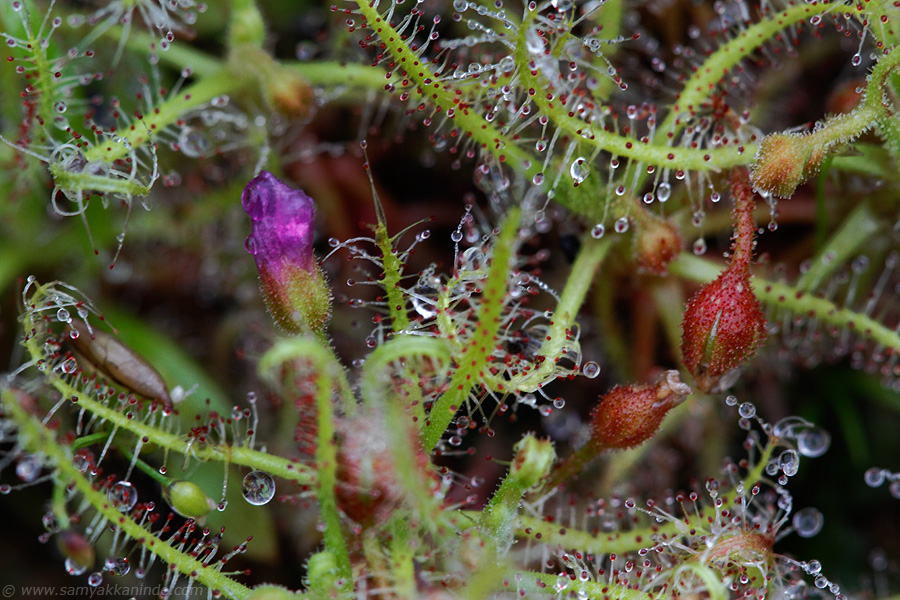
Drosera indica flower buds (Indian Sundew/Flycatcher, Marathi : Gavati Davbindu) - This insectivorous plant observed at kaas plateau can be regarded as the most important attraction. This, as the name suggests, depends on the diet of insects. As seen here in the photograph, is the complex maze like structure. The tips of the tentacles are formed by sparkling dots of sticky liquid. Those are not dew drops but sticky glue like structure to which once the insect sticks, it can't escape. The stem curl around the insect and hence the plant gets necessary nutrition from the insects to make up for the lack of it in the soil.
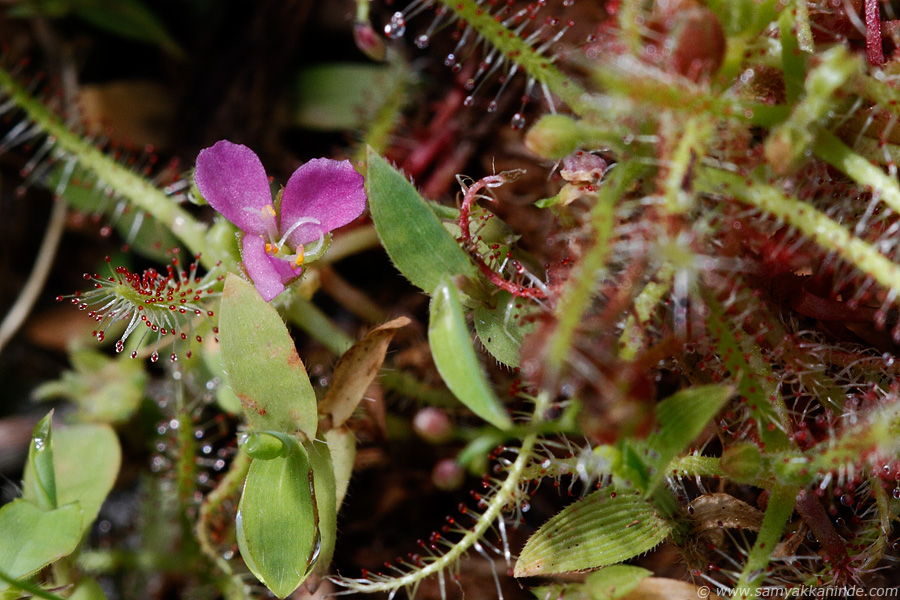
Drosera indica flower (Marathi : Gavati Davbindu) - The flower of drosera is generally pink in color but also can be seen in orange or white. The tentacles at the tip are like sparkling dewdrops, hence the other name sundew to this plant.
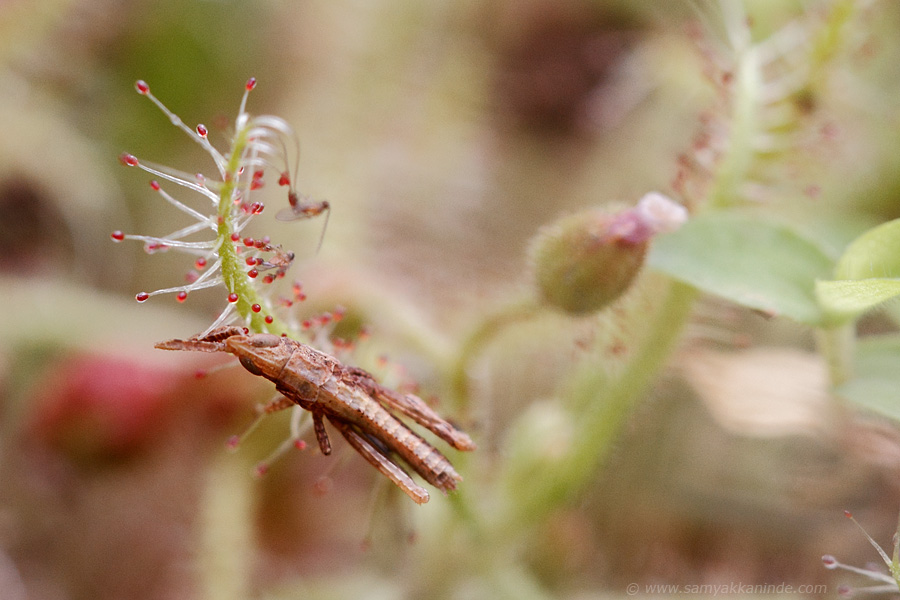
Drosera indica with a grasshopper kill. A tiny grasshopper unfortunately has jumped over the drosera's sticky tentacles and now could not escape. Seen at the other end is a fly that also is stuck at the end of the same stem. The grasshopper though was alive would be digested by the plant soon. It takes several minutes and hours probably to curl the insect completely.
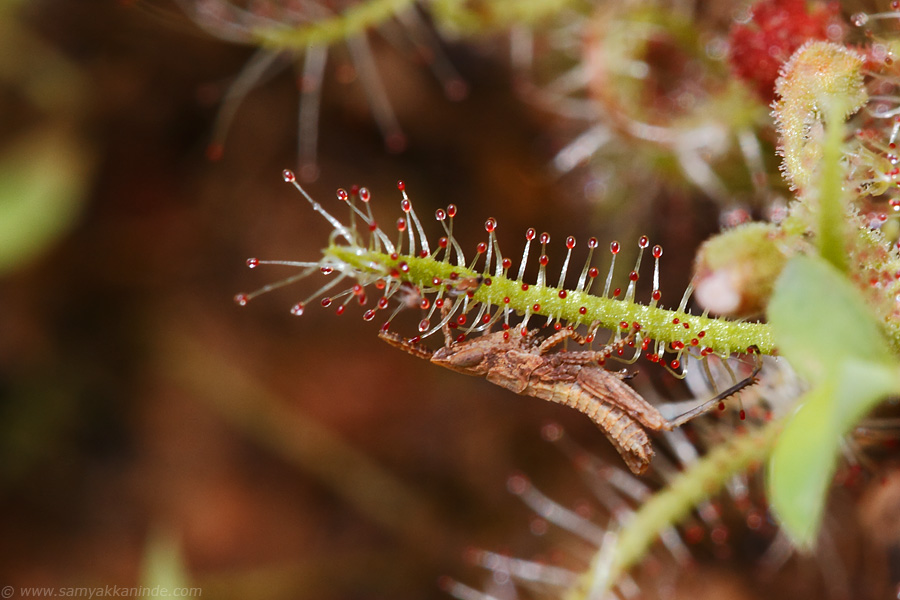
Drosera indica with a grasshopper kill. The same grasshopper seen clearly stuck in the sticky liquid at tips of the drosera plant. Its end is inevitable.
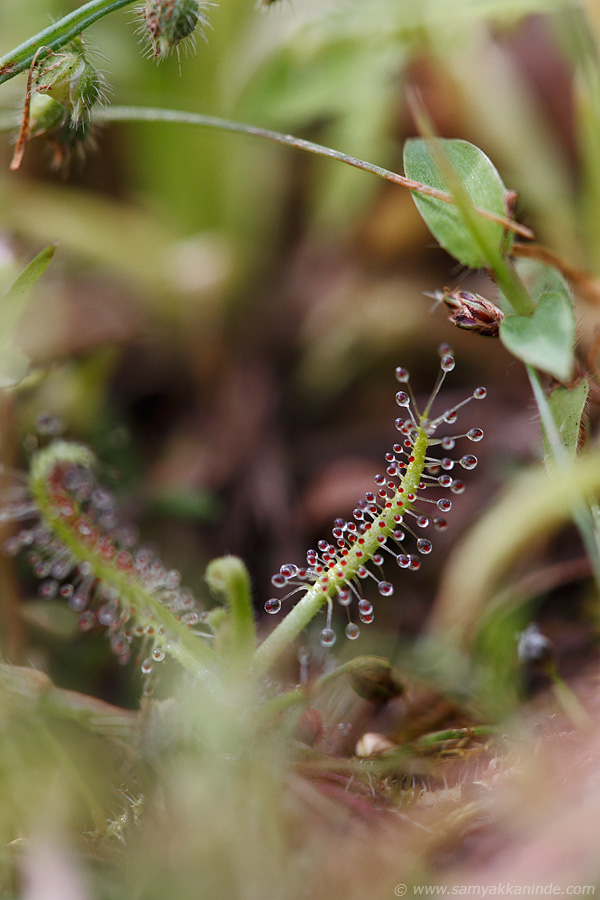
Drosera indica normally grows very close to the ground hardly reaching the height more than 30-40cm. It looks like any other normal plant with dew drops in its surrounding bushes/vegetation. The unsuspecting insects and flies gets trapped and the plant gets its necessary nutrition.
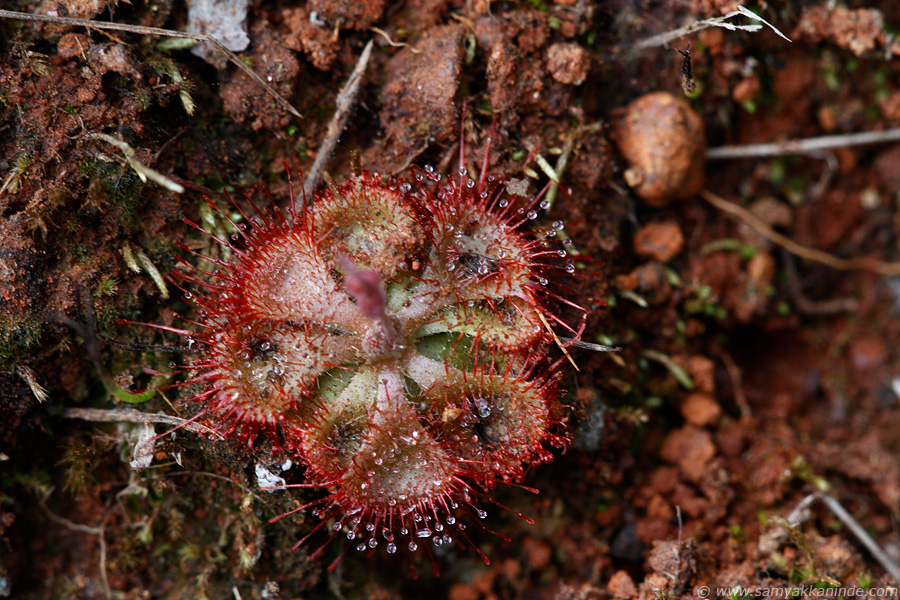
Drosera burmannii (Marathi : Davbindu) is a pretty small insectivorous plant spread out on the ground. The stem with the flower bud rises above the plant. The leaves all lie flat on the ground in a rosette. The leaves upper side has the sticky glands which trap the insects. This is one of the fastest insectivorous found around. Its leaves can curl an insect within seconds compared to a long time taken by the other similar species.
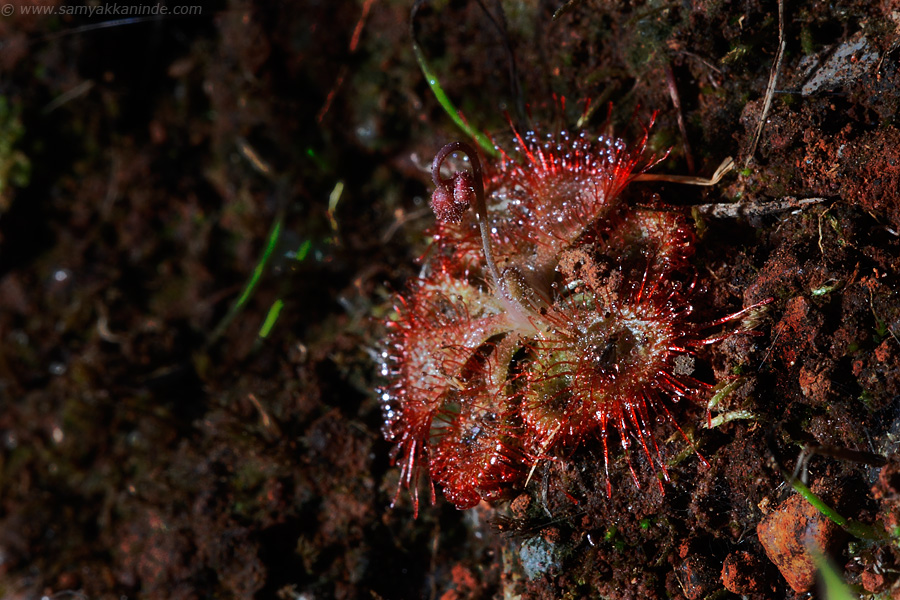
Drosera burmannii (Marathi : Davbindu) is a pretty small insectivorous plant spread out on the ground. The stem with the flower bud rises above the plant. The leaves all lie flat on the ground in a rosette. The leaves upper side has the sticky glands which trap the insects. This is one of the fastest insectivorous found around. Its leaves can curl an insect within seconds compared to a long time taken by the other similar species.
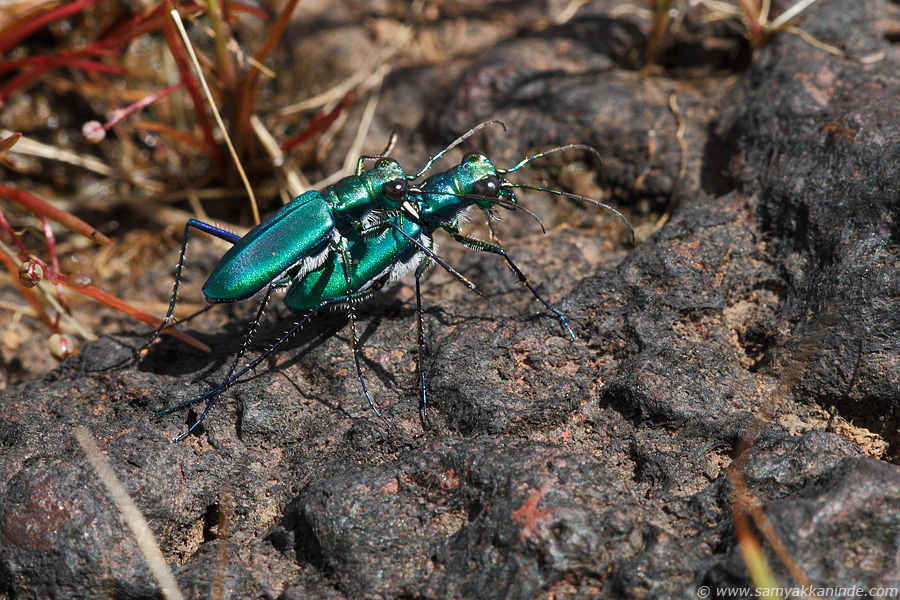
Tiger Beetles are seen in abundance. They like other insects time their emergence when the plateau blooms with all the flowers. Most of the time you would find them running around on the ground, take a closer look and it would be a couple latched on each other. Other than floral magic of kaas, it is important to observe and study the insects that habit this landscape. They are the pollinators of all these important flowers and are the ones to be revered for the job they do keep this place flowering year over year.
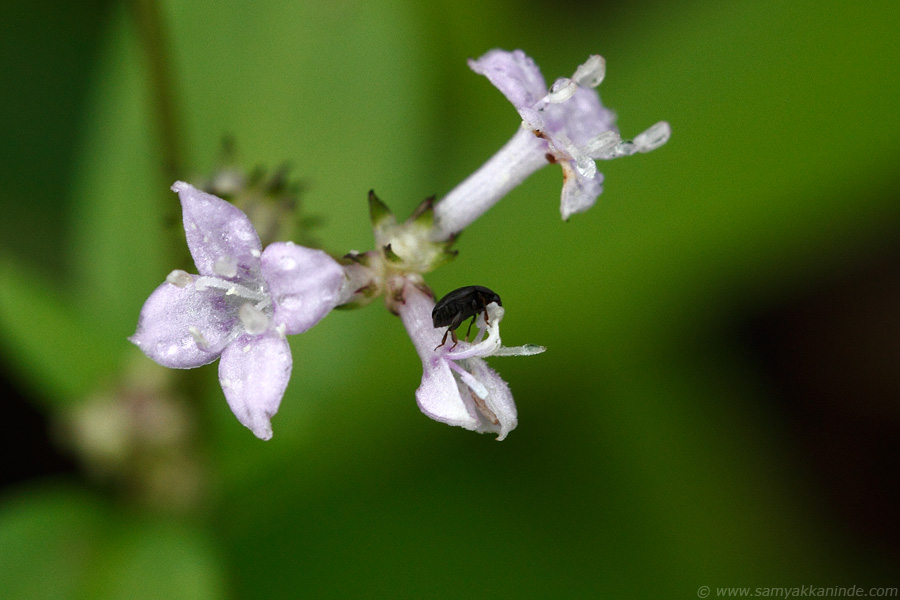
Tneanotis lancifolia / Starviolet (Marathi : Taraguccha) and a small beetle checking out for sap and in turn collecting pollen from the plant.
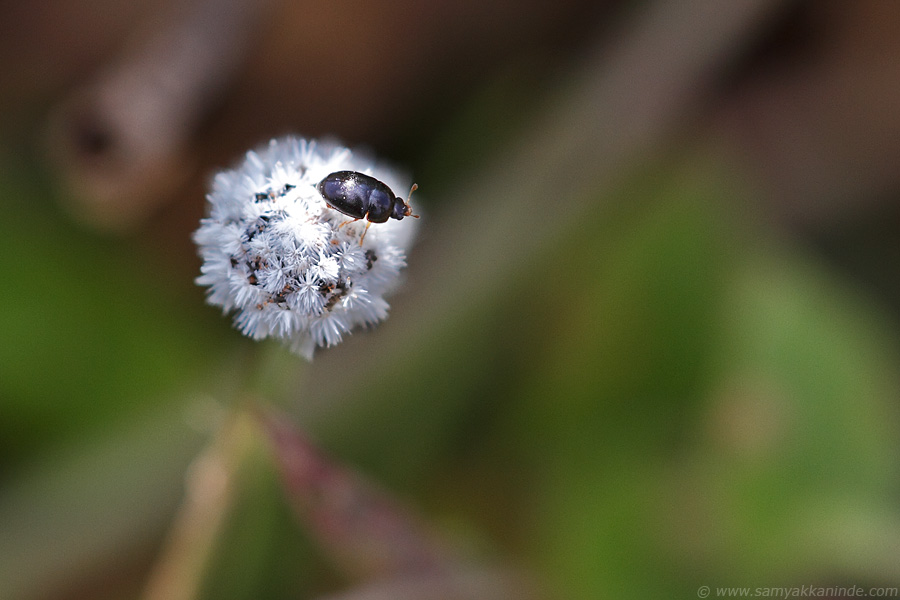
Eriocaulon tuberiferum (Tuberous Pipewort) (Marathi : Pangend) : This small ball-shaped, aquatic herb has this 6-7mm diameter ball on top. You can see an insect smaller than that was checking it out around. There were two of them on this small ball but one had just took off.
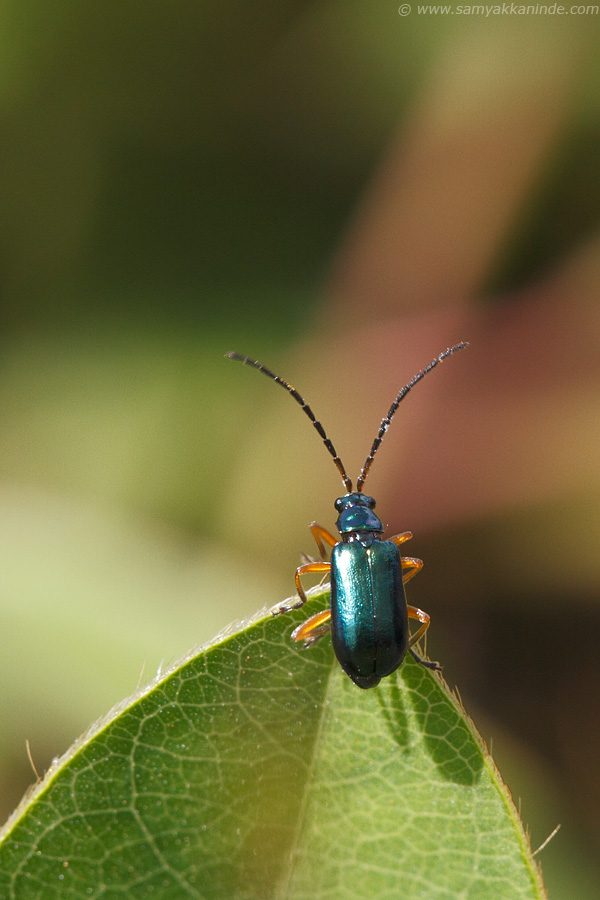
Beetle (ID Needed) is seen on one of the leaves of the plant there, was about to take off.

Senecio Grahamii (Sonki / Sonaki) seen here with its pollinator, a small beetle.

Impatiens lawii (Marathi : Jaambhala Terada) with couple of beetles inside making sure that its pollination happens successfully. This is also called as "Touch me not". The seeds are packed inside a capsule which burst open with even a lightest touch.

Impatiens lawii (Marathi : Jaambhala Terada) with honey bee bathed in pollen (take a closer look at its upper body which has polled all over it) inside making sure that its pollination happens successfully. This is also called as "Touch me not". The seeds are packed inside a capsule which burst open with even a lightest touch.
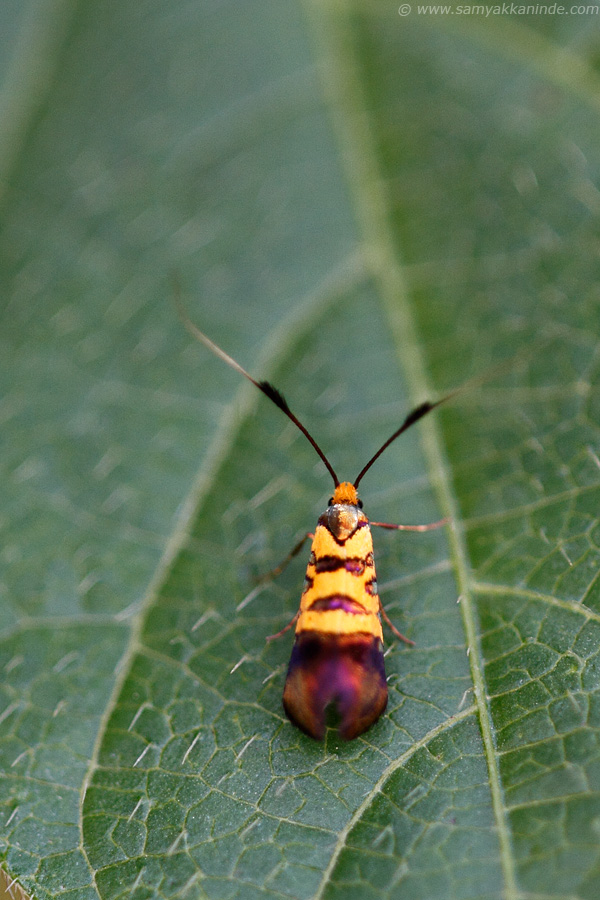
ID Needed. These kind of colorful insects are difficult to see though they are all around. The only reason is you are lost in the beauty of so many different plants and flowers that you don't look around for small flying objects that make that flowering happen.
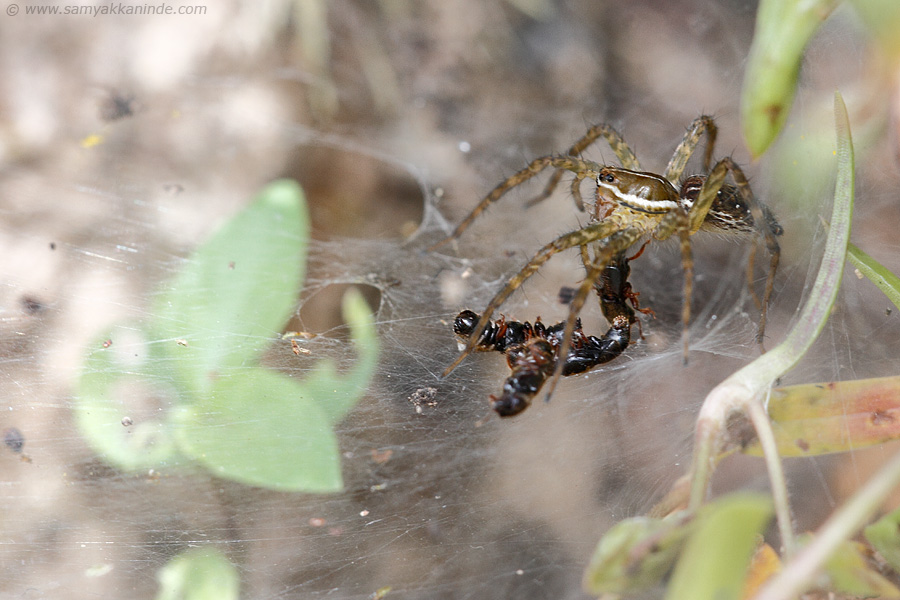
Spider (ID Needed). This spider made the most of its web by trapping as many insects as it could. The web was strategically located just above the ground between the bushes as it usually is the case with spider webs to maximise its kills.
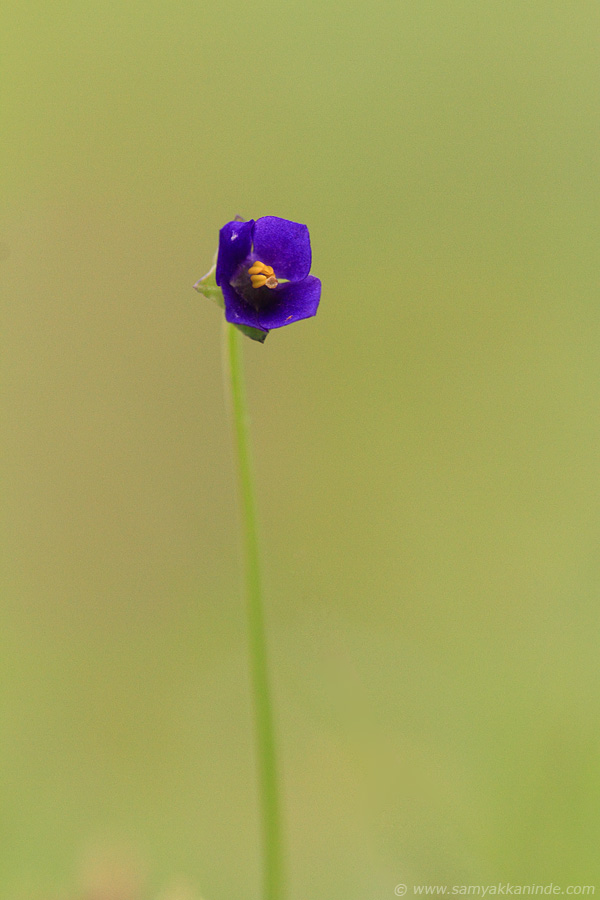
Exacum pumilum (marathi : Jambhali Chirayat)
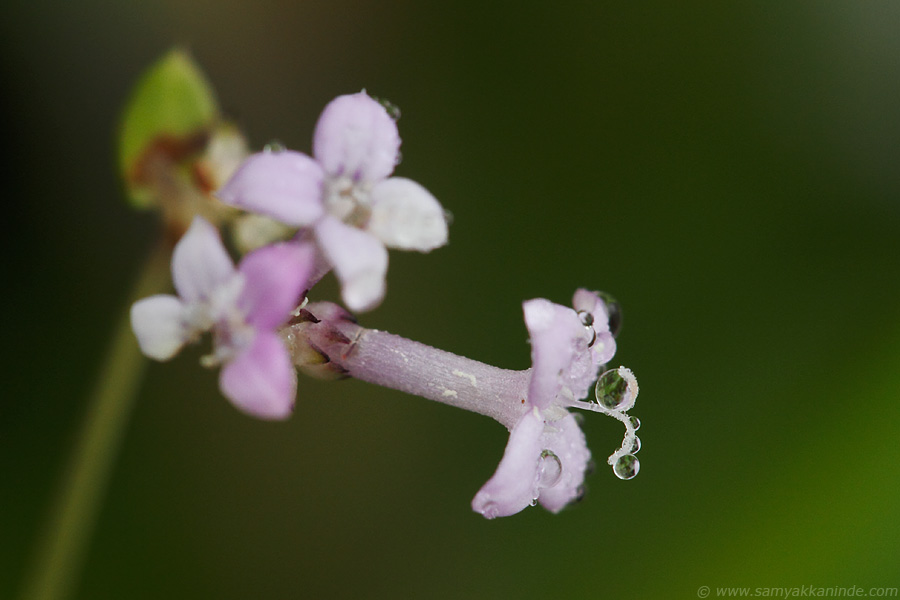
neanotis lancifolia / Starviolet (Marathi : Taraguccha) with dew drops.

neanotis lancifolia / Starviolet (Marathi : Taraguccha) with dew drops.
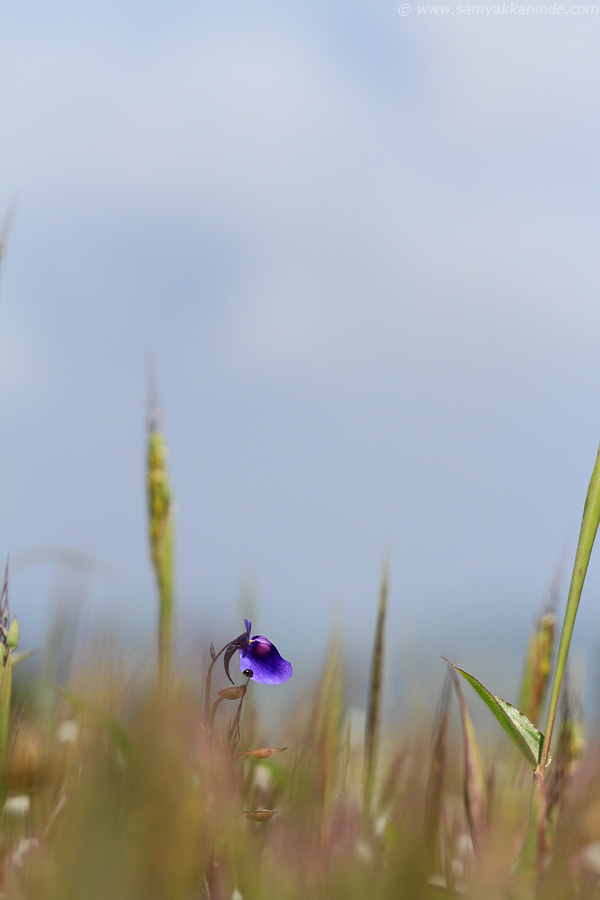
Seeta's tears flower. "Utricularia" pupurensis with a small insect on its petals.
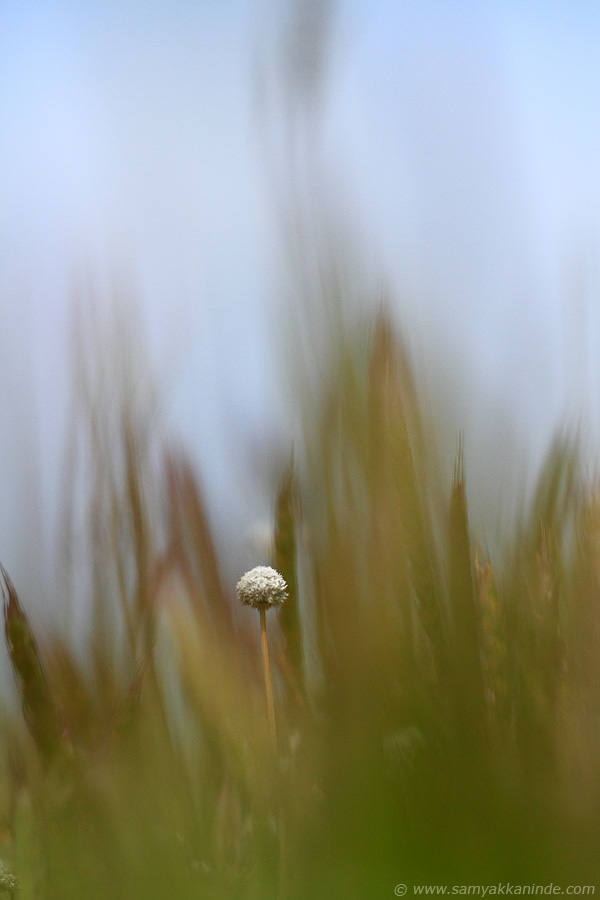
Eriocaulon tuberiferum (Tuberous Pipewort) (Marathi : Pangend).
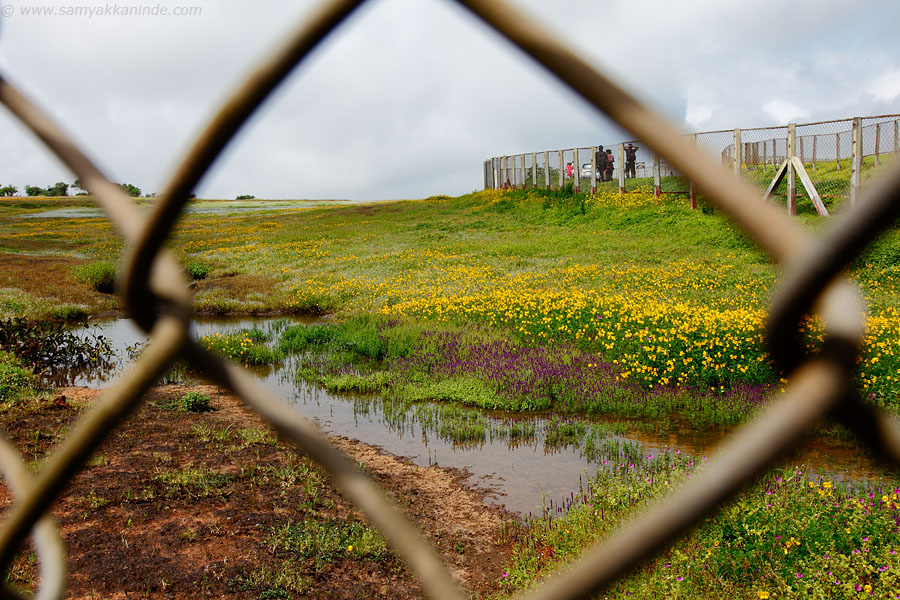
Future of Kaas, as I see it, is like this bound by the fences, restricted movements and probably irreversible loss of this flora and fauna. Why ? As there are thousands and thousands of tourist thronging the place on weekends which is beyond the capacity of this place. More harm is over when the enthusiastic tourists trample the flora for their photographs, some who take the flora with roots from the place to take it home, few botanist that take away the endangered plants for their studies. Will this place survive going forward? Yes, why not... with a responsibility lying on each of us shoulders to behave in the field, respect, learn and enjoy the beauty from a safe distance. Hope the place stays the same through all this !!
Do not forget to write about how you liked them below. Thanks for the time spent here.




